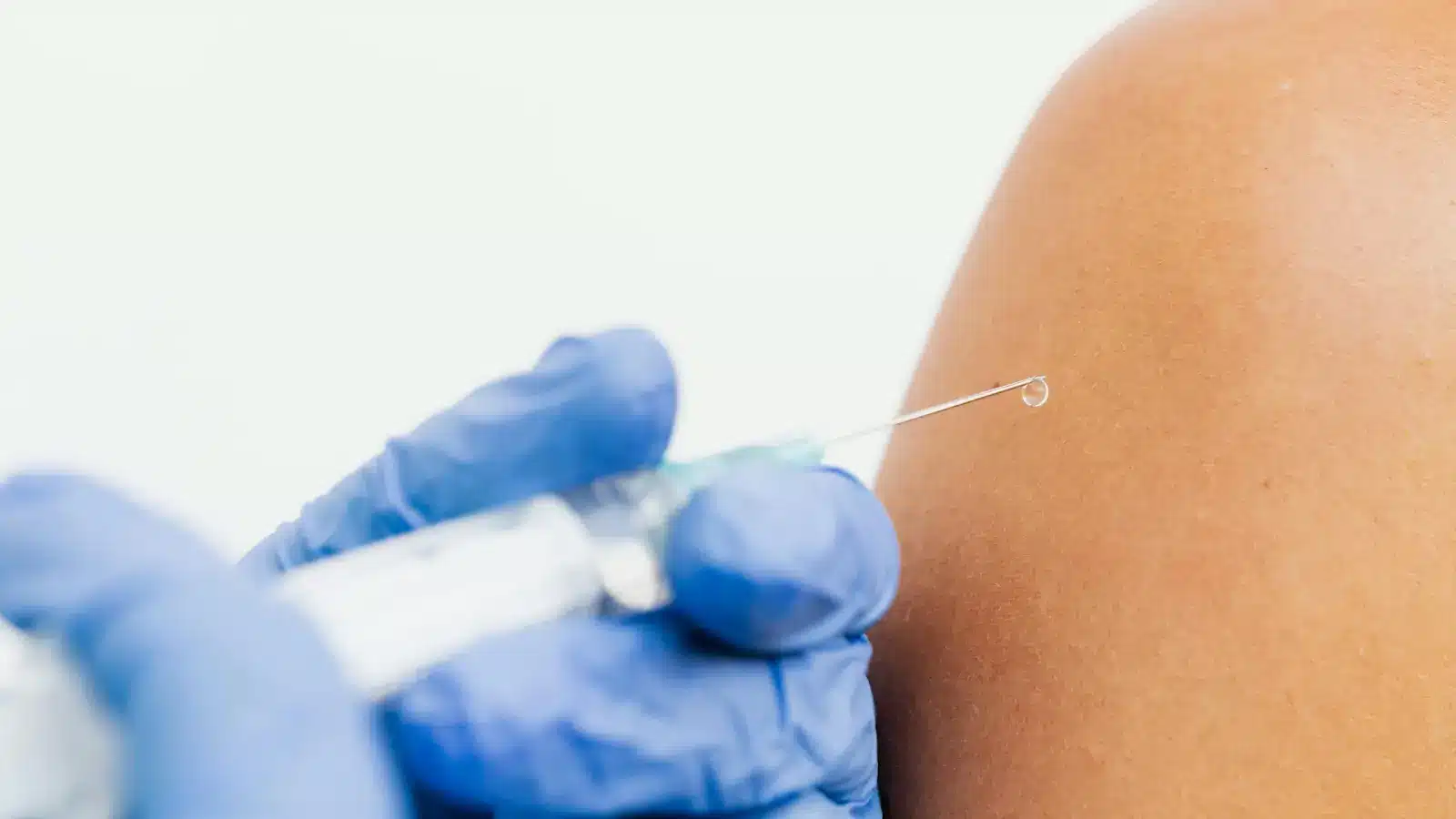
Autoimmune diseases affect more than 23.5 million people in the United States alone, with conditions like rheumatoid arthritis and lupus being among the most common. These diseases occur when the immune system mistakenly attacks healthy cells in the body, leading to chronic inflammation and tissue damage.
Orencia (abatacept) is a selective T-cell costimulation modulator used to treat various autoimmune conditions, including rheumatoid arthritis, polyarticular juvenile idiopathic arthritis, and psoriatic arthritis. It works by inhibiting the activation of T cells, which play a key role in the immune response3.
In this article, we will explore the Orencia prescribing information, focusing on key details that healthcare providers need to know to use this medication safely and effectively.
Key Takeaways
- Orencia inhibits T-cell activation, which helps modulate the immune response and reduce autoimmune attacks on healthy tissues.
- Orencia should not be used in patients with hypersensitivity to abatacept or active infections until adequately treated.
- Transitioning between IV and SC formulations should be done with healthcare provider guidance to ensure proper dosing and therapeutic outcomes.
About: Doctor Medica is your trusted supplier of top-quality dermal fillers, viscosupplements, and more for your medical practice. We offer genuine products from leading brands at the lowest prices. Contact Doctor Medica today to order Orencia online.
Approved Indications and Treatment Goals

Orencia can treat several autoimmune conditions, including:
- Rheumatoid Arthritis (RA): Orencia treats moderate to severe RA in adults who have not responded to other disease-modifying antirheumatic drugs (DMARDs). It can be used as monotherapy or in combination with methotrexate and other DMARDs.
- Juvenile Idiopathic Arthritis (JIA): Orencia is approved to treat moderate to severe polyarticular JIA in patients aged 6 years and older who have failed to respond to other therapies.
- Psoriatic Arthritis (PsA): Orencia can reduce the signs and symptoms of active PsA in adult patients who have not responded to previous treatments.
The primary treatment goals for these indications are to reduce inflammation, slow disease progression, and improve patient function. Orencia’s mechanism of action, which involves inhibiting T-cell activation, helps modulate the immune response and reduce autoimmune attacks on healthy tissues.
Dosing Schedules

Orencia is available in two formulations: intravenous (IV) and subcutaneous (SC). The dosing schedule differs depending on the route of administration.
Intravenous (IV) Formulation
For patients receiving the IV formulation, the recommended dosing schedule for rheumatoid arthritis (RA) is as follows:
- Induction Phase: A loading dose follows the dosage below:
- 1st dose: At Week 0
- 2nd dose: At Week 2
- 3rd dose: At Week 4
- Maintenance Phase: Patients should receive one infusion every 4 weeks after the induction phase.
For juvenile idiopathic arthritis (JIA), the dosing for children aged six and older is weight-based, with doses given at the same schedule as RA but adjusted according to weight.
Subcutaneous (SC) Formulation
For the subcutaneous formulation, the typical dosing is once weekly. After the initial loading dose (if applicable), patients typically start a maintenance regimen of 1 injection per week.
- Rheumatoid Arthritis: After the initial IV induction therapy, patients can choose the SC formulation and transition to weekly SC doses of 125 mg.
- Psoriatic Arthritis and JIA: For these indications, the recommended SC dose is also 125 mg weekly after the initial induction phase.
The transition between IV and SC formulations should be done in consultation with a healthcare provider to ensure optimal dosing and therapeutic response.
Contraindications and Precautions

Orencia is contraindicated in patients with a known hypersensitivity to abatacept or any of the formulation’s components. Additionally, patients with active infections should not receive Orencia until the disease is adequately treated, as immunosuppression could worsen existing infections.
There are certain precautions when prescribing Orencia, including:
- Infections: Since Orencia modulates the immune system, patients are at increased risk of infections, including upper respiratory infections, pneumonia, and urinary tract infections. Healthcare providers should monitor for signs of infection and treat them promptly.
- Malignancies: Immunosuppressive therapies like Orencia may increase the risk of certain cancers, including lymphoma. Patients with a history of malignancies should be monitored closely.
- Hepatitis B and C: Practitioners should monitor patients with chronic hepatitis B or C for signs of reactivation of these infections during treatment with Orencia.
- Hypersensitivity Reactions: Immediate hypersensitivity reactions, including rare anaphylaxis, can occur. Therefore, monitoring for these reactions, particularly during the first infusion or injection, is essential.
Monitoring and Assessment
Continuous monitoring and assessment are crucial components of Orencia’s information-prescription process. Regular evaluations help ensure treatment efficacy and minimize potential risks.
Healthcare providers should assess the effectiveness of Orencia through periodic physical examinations and laboratory tests. Key parameters include:
- Joint Symptoms: Regular evaluation of joint tenderness, swelling, and stiffness.
- Disease Activity Scores: Disease activity measurements, such as the DAS28 (Disease Activity Score), can help gauge the success of the treatment.
Monitoring for Safety
When prescribing Orencia, it is crucial to monitor patients regularly to ensure the treatment is practical and safe. This includes screening for infections, as Orencia can increase susceptibility to upper respiratory and urinary tract infections.
- Infections: During treatment, practitioners should regularly screen for diseases, especially upper respiratory and urinary tract infections.
- Liver Function Tests: Patients with a history of liver disease or hepatitis may need periodic liver enzyme tests.
- Complete Blood Count (CBC): Routine blood work helps monitor potential blood dyscrasias, such as low white blood cell counts.
Practitioners should also monitor patients receiving Orencia for any signs of malignancy, hypersensitivity reactions, or cardiovascular events.
Conclusion
Orencia is a powerful biologic therapy that can treat autoimmune diseases such as rheumatoid arthritis, juvenile idiopathic arthritis, and psoriatic arthritis. By gaining a thorough understanding of Orencia’s prescribing guidelines, healthcare providers can ensure appropriate patient selection, optimize treatment outcomes, and closely monitor for potential risks throughout therapy.
For patients who have not responded to conventional treatments, Orencia offers a promising solution, providing renewed hope for managing refractory autoimmune diseases. A clear understanding of its mechanism of action, along with careful administration, is essential for achieving optimal results and enhancing the quality of life for patients.
FAQs
1. How does Orencia work to treat autoimmune diseases?
Orencia works by inhibin inhibition, a key driver of inflammation and tissue damage in autoimmune diseases. It prevents the costimulatory signal required for T-cells to become fully activated, thereby reducing the immune response.
2. How do practitioners administer Orencia?
Practitioners can inject Orencia intravenously or subcutaneously. The IV form is given initially in loading doses, followed by maintenance doses every 4 weeks. The subcutaneous form is given weekly after the loading phase.
3. What are the common side effects of Orencia?
Common side effects include upper respiratory tract infections, headaches, and nausea. Serious side effects, such as hypersensitivity reactions and increased risk of infections, are less common but should be monitored.
4. Can Orencia be used in pediatric patients?
Yes, Orencia has approval for pediatric patients with juvenile idiopathic arthritis (JI), ages six and older. However, children need special considerations regarding dosing and monitoring.
References
Autoimmune diseases.Office on Women’s Health. https://womenshealth.gov/a-z-topics/autoimmune-diseases
Radu AF, Bungau SG. Management of Rheumatoid Arthritis: An Overview. Cells. 2021;10(11):2857. doi:10.3390/cells10112857
Related Articles
Joanna Carr
Filorga Lip Filler: Understanding the Science Behind Lip Augmentation
Explore the science of Filorga lip fillers for natural-looking lip augmentation. Learn more at Doctor Medica.
Joanna Carr
Radiesse Butt Lift – All About the Procedure
The Radiesse butt lift procedure involves stimulating collagen production to achieve a natural-looking enhancement.
Joanna Carr
HYAcorp Before and After: Real Results in Body Contouring
Explore real-life HYAcorp before and after transformations in body contouring. See how this non-invasive treatment reshapes curves, reduces stubborn f...


